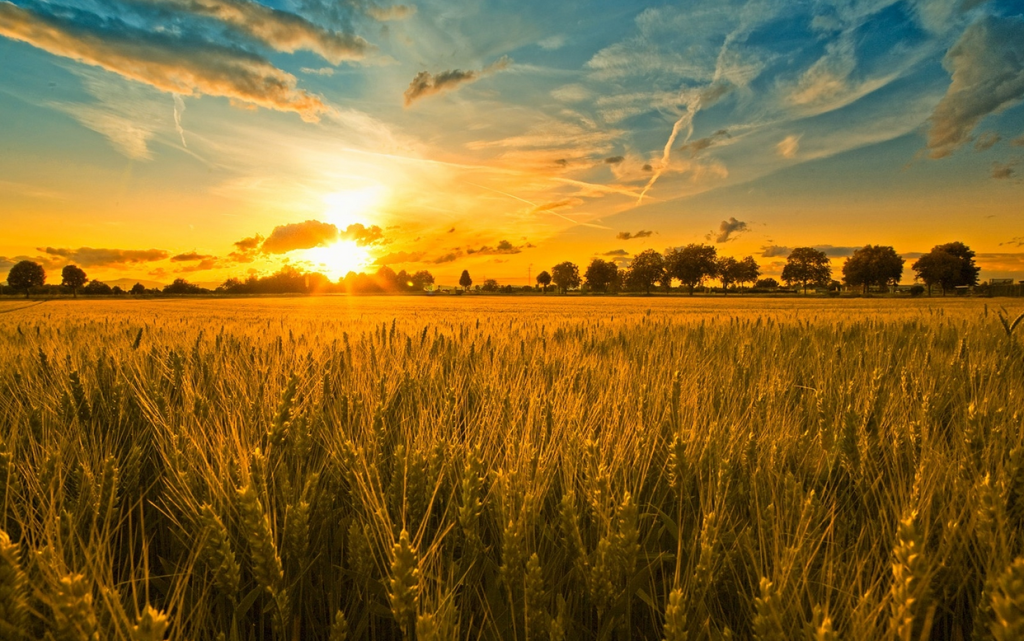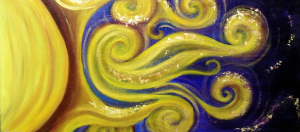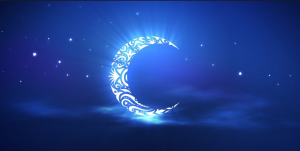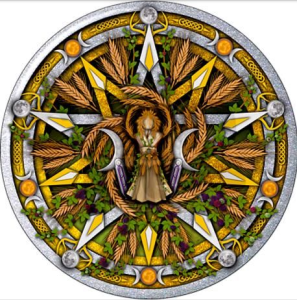
As I was looking through the cornucopia full of Lughnasadh articles offered on the web I found these two gems.
- “Celebrating Lammas,” by Waverly Fitzgerald is a fascinating excursion into British History and the death of King William the Red that seques gracefully into an explanation of what the festival means and ways to celebrate it.
- “Why I’m Boycotting Lughnasadh,” by John Halstead is a lovely rant about how pagans need to get in touch with what is really happening in their part of the world and celebrate the holiday appropriately. Our friends in the southern hemisphere should be celebrating Imbolg, not Lugnasadh, for example, and those in tropical climates should rethink the whole wheel of the year.
After reading Halstead’s article I realized that I too had a rant. It’s about a small, simple problem; one that, after all is said and done, really makes no difference at all except to me and my obsessive/compulsive need to get things straight. As I was reading through the articles today I noticed that the dates given for Lugnasadh ranged from July 31st to August 2nd. One author, who should have known better, even tried to convince me that pagans in the northern hemisphere celebrate it on August 1 and those in the southern hemisphere celebrate it on August 2.
So why the confusion?
We are dealing with two different matters here, one relating to the sun and the other to the moon.

Lughnasadh is a cross-quarter day on the Wheel of the Year (a modern construct laid on us by Gerald Gardner). What this means is that Lughnasadh and the other cross quarter days (Imbolc, Samhain, and Beltane) occur at the midpoints between Winter Solstice, Spring Equinox, Summer Solstice, and Fall Equinox (the quarters of the solar year). By my reckoning, that would put Lughnasadh (the midpoint between Summer Solstice and Fall Equinox) at August 7th this year, since Summer Solstice happened on June 21st and Fall Equinox will happen on September 23rd. So from the get go, we know that the cross-quarter days aren’t exactly at the midpoints. My guess is that they got stuck at the first of the month that falls between each solstice and equinox for convenience. There is never any question about what day Samhain and Beltane fall on, probably because Halloween and May Day are holidays celebrated by many Americans, Europeans, and Australians—not just pagans—and so have been set in stone on our solar calendars But why do we celebrate Samhain on October 31st and Beltane on May 1st? And why the confusion over Lughnasadh? (and Imbolc too–it is February 1st or 2nd depending on who you celebrate with) This question brings us to…

The Lunar calendar.
Pagan, Hebrew, and Islamic holy days are timed to a lunar calendar with the solar cycle tacked onto it. Christianity is based on a solar calendar with the lunar cycle tacked onto it. Religions based on a lunar calendar count their days from sunset to sunrise to sunset with the day beginning immediately after sunset. The Christian calendar (which is the calendar everyone uses) counts its days from midnight to noon to midnight with the day beginning immediately after midnight. So, technically, the cross-quarter days begin at sunset of one of our calendar days and end at sunset on the next calendar day. This is where the eves come in. Halloween (October 31) is short for All Hallow’s evening. We celebrate Samhain after sunset on October 31st for obvious, spooky reasons, but the Festival continues until sunset of November 1. Beltane Day is May 1st, which is when we dance the Maypole at sunrise (or a bit later for those who have been up all Beltane Eve (April 31st) dancing before the Bel-fire and making love in the hedgerows.) Lughnasadh, like all the other cross quarter days, would begin on sunset, July 31st or August 1st and end on sunset, August 1st or August 2nd. This explains the discrepancies, but still doesn’t tell us whether Lughnasadh Eve should fall on July 31st or August 1st, or for that matter, whether Imbolc Eve should fall on March 31st or February 1st.
But it’s important to know why we don’t know.
Actually, I don’t believe it really matters whether you celebrate the first harvest and the passionate bounty of summer on July 31st, August 1st, August 2nd—or even August third, fourth, or fifth—just as long as you celebrate.



One thought on “A bountiful and joyous Lughnasadh to all!”
Here, here! . . .So long as you celebrate!
Namaste’
Rebecca